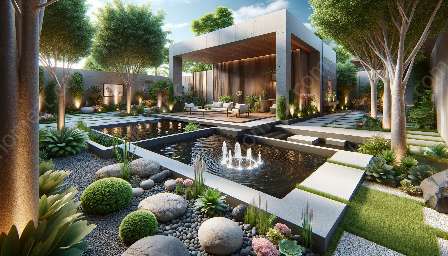Ponds are natural, serene additions to outdoor spaces, and creating a balanced and aesthetic ecosystem within them is crucial for their health and beauty. From pond construction to the introduction of plants, fish, and beneficial bacteria, there are various ways to achieve this harmonious balance. Understanding the principles of pond ecology, proper maintenance, and the integration of outdoor structures can help in creating a thriving pond ecosystem that enhances the overall landscape.
Pond Construction for Balanced Ecosystem
Building a pond with a balanced ecosystem starts with proper construction. A well-designed pond will have different zones, including shallow areas for plant growth and deeper areas for fish habitat. Incorporating features such as a biological filter, skimmer, and pump system will help maintain water quality and circulation. It's important to consider the size and depth of the pond, as well as the surrounding landscape, to ensure a cohesive and visually appealing outdoor environment.
Introducing Aquatic Plants
Aquatic plants play a vital role in maintaining a balanced ecosystem within ponds. They oxygenate the water, provide habitat for beneficial insects and microorganisms, and offer food and shelter for fish. Incorporating a variety of water lilies, lotus, floating plants, and submerged vegetation can enhance the aesthetic appeal of the pond while contributing to its overall health.
Adding Fish to the Ecosystem
Introducing fish to the pond can further contribute to its ecosystem balance. Fish feed on algae and insect larvae, helping to control the population of these organisms. However, it's crucial to select fish species that are compatible with the pond size and climate conditions to avoid overcrowding or imbalance in the ecosystem. Koi, goldfish, and native species are popular choices for pond environments.
Beneficial Bacteria and Filtration Systems
Beneficial bacteria play a significant role in maintaining water clarity and quality. These bacteria help break down organic matter, such as fish waste and decaying plant material, preventing the accumulation of harmful nutrients in the water. Additionally, incorporating a filtration system, such as a biofilter or bog filter, can aid in removing debris and maintaining optimal water conditions for a healthy ecosystem.
Integration with Outdoor Structures
Creating a balanced and aesthetic ecosystem within ponds can be further enhanced by integrating outdoor structures. Adding a waterfall or stream not only adds visual interest but also aids in oxygenation and circulation of the water. Additionally, incorporating natural stone features, such as boulders and rock formations, can provide shelter for fish and create a more naturalistic environment.
Maintenance and Balance
Regular maintenance is essential for sustaining a balanced pond ecosystem. This includes monitoring water quality, removing excess debris, and managing plant growth. It's important to strike a balance between nurturing the ecosystem and controlling elements that can lead to imbalance, such as excessive algae growth or invasive plant species. By maintaining an equilibrium, the pond can thrive as a harmonious and visually captivating outdoor feature.



